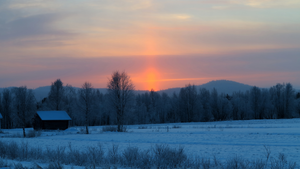
Winter Solstice
Every year, on 21st or 22nd December - the shortest day in the Northern Hemisphere.
Celebrating the changing of the seasons.
About the event
The December winter solstice, or midwinter, is observed throughout the northern hemisphere as the shortest day. Celebrated since ancient times, different cultures and countries mark the day in different ways. In Europe ancient pagan traditions such as Yule have been partially absorbed into the Christian Christmas celebrations. However, there are still gatherings at ancient sites such as Stonehenge which accurately marks the rising of the solstice sun.
How to approach it
This is a great opportunity to introduce concepts of global cultural diversity. Explore with your class how the winter solstice is celebrated by different communities, cultures and regions. For example, the ancient Celts believed the sun stood still for twelve days during which a ‘Yule log’ was lit to banish the darkness. Alternatively you could explore the celebration of this day amongst Hindus in India called Ayan Parivartan which involves ceremonial bathing in rivers, charity and prayer.
Encourage your students to pick a country and find out how they celebrate the winter solstice. Ask them to compare the different celebrations. What do they have in common? What is different about them? This is a great way to get students thinking about how cultural traditions are transferred, shared and changed by different groups of people.
Secondly, and most importantly, the winter solstice is a celebration centred on the movements of the seasons around us. With its pagan origins, it marks a point in time in which many cultures were (and still are) intimately connected with nature and natural cycles. This is a really useful way to re-introduce this concept to students; to nurture feelings of connection and reverence for the natural world. This could be done by exploring the design and potential uses of stonehenge such as how its stones track the sun’s movements on key dates throughout the year. Ask students, what is the significance of following the seasons? Why might it make us feel a greater connection to the natural processes of the world around us?
Conversation starter
Winter solstice is the celebration of the shortest day of the year. It is the day with the least amount of sunlight and it has been celebrated for thousands of years all over the world. Ancient people used this day to mark the turning of the seasons. At what time of year do you feel most connected to nature? Why?
